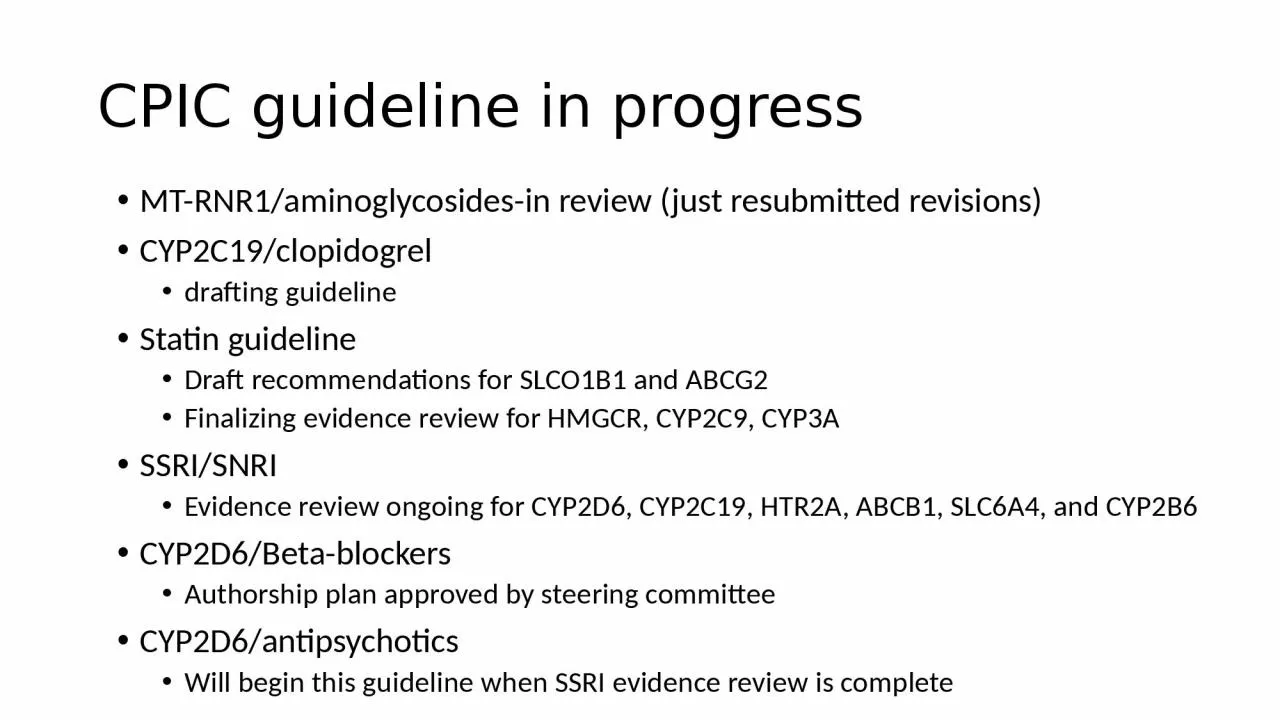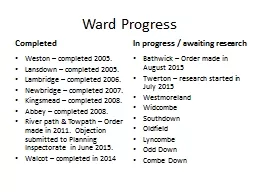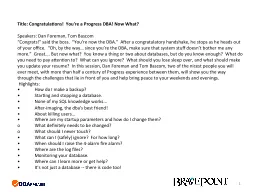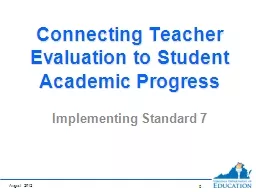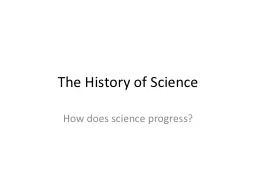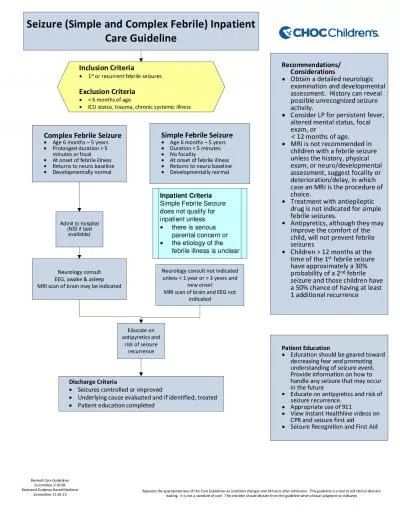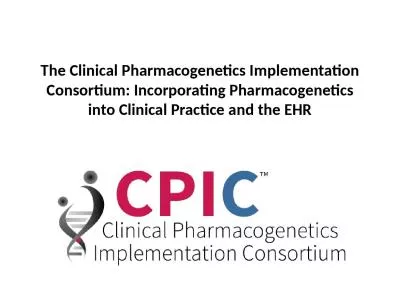PPT-CPIC guideline in progress
Author : CharmingCheeks | Published Date : 2022-08-03
MTRNR1aminoglycosidesin review just resubmitted revisions CYP2C19clopidogrel drafting guideline Statin guideline Draft recommendations for SLCO1B1 and ABCG2 Finalizing
Presentation Embed Code
Download Presentation
Download Presentation The PPT/PDF document "CPIC guideline in progress" is the property of its rightful owner. Permission is granted to download and print the materials on this website for personal, non-commercial use only, and to display it on your personal computer provided you do not modify the materials and that you retain all copyright notices contained in the materials. By downloading content from our website, you accept the terms of this agreement.
CPIC guideline in progress: Transcript
Download Rules Of Document
"CPIC guideline in progress"The content belongs to its owner. You may download and print it for personal use, without modification, and keep all copyright notices. By downloading, you agree to these terms.
Related Documents

